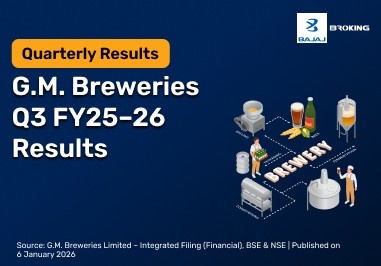About Price Action Trading
Price Action Trading is a method of analyzing and making trading decisions based purely on historical price movements. Unlike traditional technical analysis, which relies on indicators such as the RSI, MACD, or Bollinger Bands, price action traders focus on raw price data—candlestick formations, support and resistance levels, trendlines, and breakout patterns.
This strategy is based on the fundamental belief that price itself is the best indicator of future movement. By studying past price behavior, traders attempt to anticipate market trends, reversals, and continuation patterns without being influenced by lagging indicators. The approach helps traders react swiftly to market changes and execute well-timed entries and exits.
One of the key advantages of Price Action Trading is its adaptability across various asset classes, including stocks, forex, commodities, and even cryptocurrencies. Many experienced traders prefer this method because it allows them to trade with a clean, uncluttered chart, relying only on market structure, momentum, and psychological price levels. This minimalistic approach helps traders develop a sharper sense of market sentiment and improves decision-making in dynamic trading environments.
Highlights
- About Price Action Trading
- Example of the Price Action Strategy
- Price Action Trading Strategies
About Price Action Trading
Price Action Trading and Price Action Trading Strategy is derived from the idea that the stock price and its movements are the only valid sources of information that can be used for day traders. Price Action Trading strategies are based on this premise. Several day traders use various technical analysis tools such as Japanese Candlestick patterns, Bollinger Bands, etc., to make effective trading decisions. However, price action traders concentrate their attention on the movements in stock prices at the exact time when they are making plans to trade in the stock.
Price Action Trading Strategies in Action - An Example
You will be able to grasp the concept of Price Action Trading strategies in action with an illustrated example. For instance, if a trader witnesses an increase in the price of a stock, then the first guess they make is that people are buying the stock. The assumption is that, as more people buy the stock, the price increases.
Next, traders look at the aggressiveness with which investors are buying the specific stock and they analyse the trading volume, velocity, bids, offers, and other aspects. This allows them to actively identify both trending and pullback waves and make various trading decisions.
Price Action Strategies You Should Know About
Most traders who engage in Price Action trading strategies use tools such as breakouts, candlesticks, and trends to leverage support and resistance principles for forming trading strategies. The following are some common Price Action trading strategies to consider:
- Trading on a Trend Basis
Today, traders take note of the price movements and trends in these to make any decisions regarding trading. They tend to use a range of techniques to monitor current trends and follow market price trends. In this manner, they learn about trading techniques from more experienced traders who follow price action trends. Price Action Trend Trading lets the trader open a ‘buy’ position to leverage from an uptrend and a ‘sell’ position in case of a downtrend.
- Pin Bar Patterns
A candle with a long wick forms a pin bar pattern on a chart. When traders see this pattern, it normally indicates the rejection or reversal of a particular price. The wick represents the price range that may not have been acceptable to investors.
In Price Action trading strategies, traders tend to assume that the pin bar shows that the price may begin to move in the opposite direction and traders will then opt to take a long or short position.
- The Inside Bar
This is a dual-bar strategy in which the outer bar is larger than the inner bar. The inner bar lies within the low range of the outer bar. Generally, inner bars are created when the market gets consolidated and can also imply a market’s turning point. Traders who are experienced identify trends like this and make informed decisions about whether the inside bar is representative of a turning point or a consolidation point.
- Trends Following a Breakout Entry
When the market makes a move outside resistance and support levels, a breakout trend may be seen. Many day traders make the assumption that the stock market will retract after a spike in prices (in either direction). Consequently, they use such circumstances to take short or long positions.
The most common trading strategy within this framework is the head-and-shoulders reversal tactic. Here, day traders select entry points after a series of rises and falls and set stop-losses to leverage certain peaks in prices.
Difference Between Price Action, Technical Analysis, and Indicators
Aspect
| Price Action
| Technical Analysis
| Indicators
|
Definition
| Relies solely on price movements to make trading decisions.
| Utilises mathematical calculations and formulas to forecast price trends.
| Provides real-time signals derived from price trends.
|
Focus
| Observes raw market data like trends, breakouts, and reversals.
| Focuses on historical price patterns and statistical data.
| Focuses on specific triggers like moving averages or RSI.
|
Intuition vs. Calculation
| Offers an intuitive approach based on visual chart analysis.
| Provides structured predictions through data modelling.
| Requires predefined conditions for actionable insights.
|
Key Users
| Ideal for traders who trust their own analysis of price action indicators.
| Suitable for analysts who need diverse tools to understand potential trends.
| Common among traders who rely on signals to spot emerging trends and trade efficiently.
|
Complexity
| Simple to interpret for experienced traders relying on price action strategies.
| Can be complex due to the need for statistical knowledge.
| Easy for beginners, as they only follow indicator cues.
|
Summarising Price-Action Trading Strategies
In case you want to make use of Price Action trading strategies to your advantage, it is important that you gain some knowledge and expertise beforehand. Based on the premise that traders choose entry and exit points according to price movements in the market, this can be an effective technique if used wisely. Traders attempt to determine trends with actual market prices and not with the law of moving averages (as is done in the case of technical analysis).
Whether you are a novice or a seasoned player in the trading game, you have to be careful but well-planned while identifying opportunities to make profits. It is vital to remember to practise any technique and strategy before you execute them for major trading choices or decisions.
Disclaimer: Investments in the securities market are subject to market risk, read all related documents carefully before investing.
This content is for educational purposes only. Securities quoted are exemplary and not recommendatory.
For All Disclaimers Click Here: https://bit.ly/3Tcsfuc














